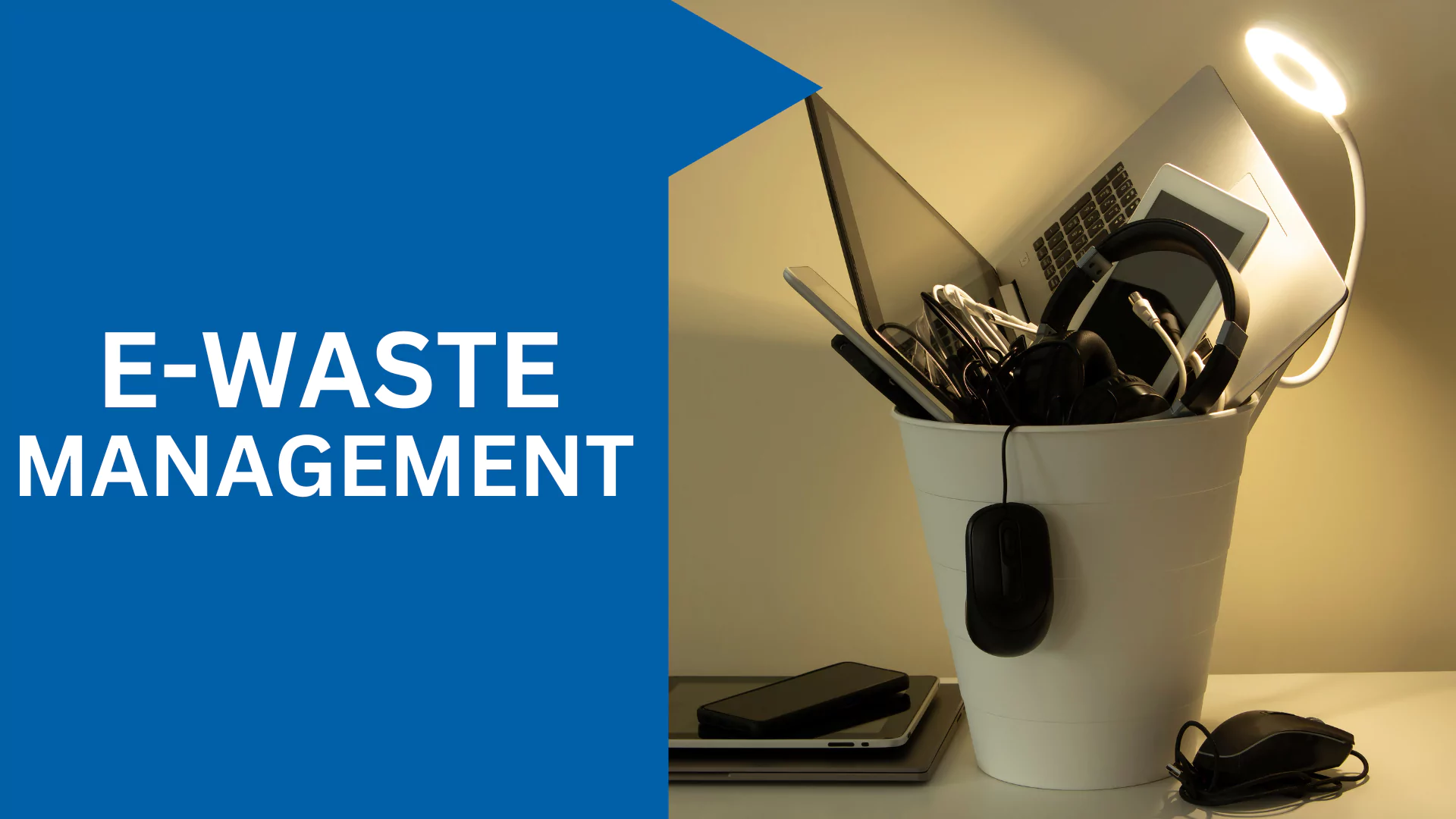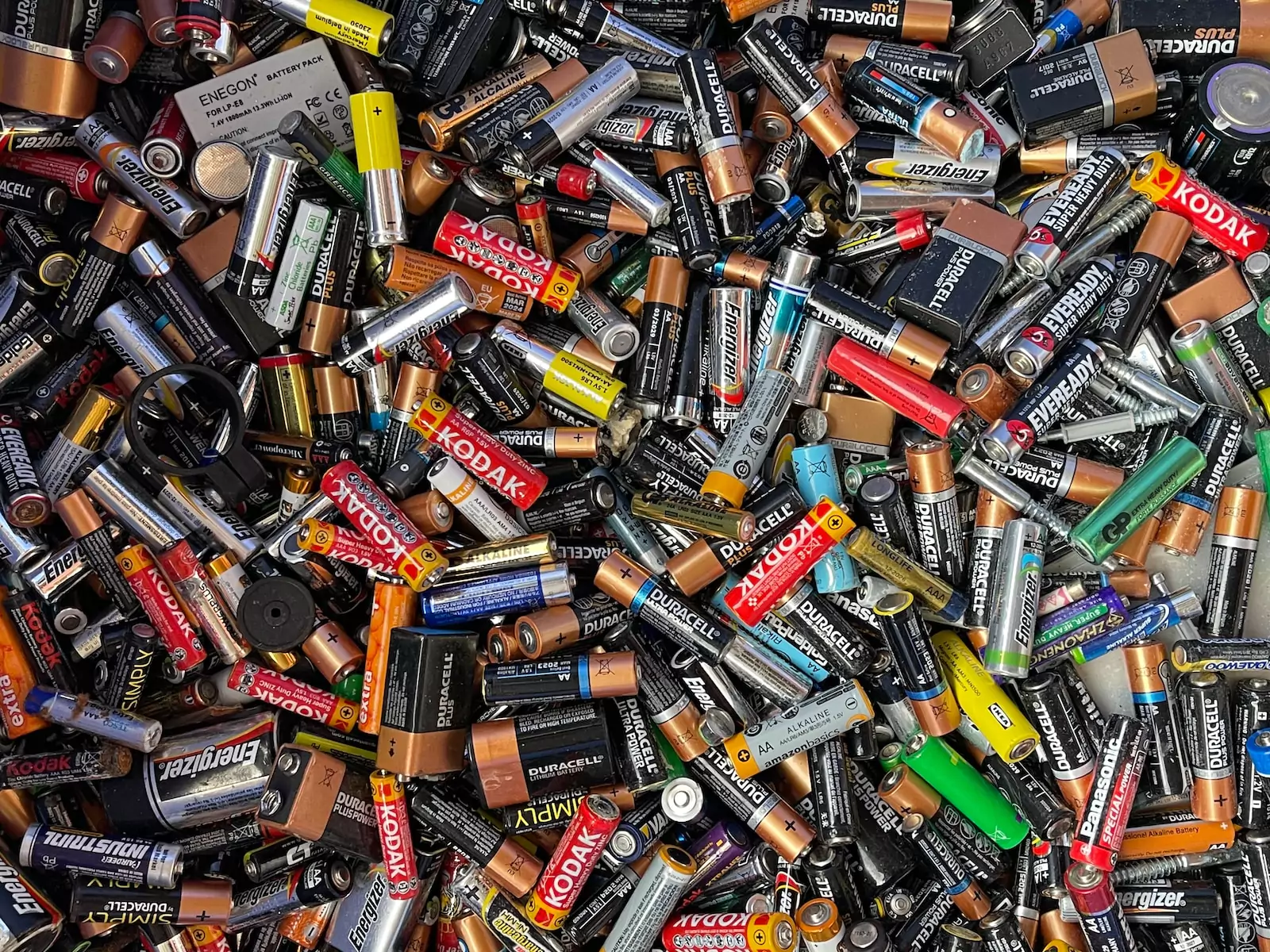E-Waste Management Laws 2024
E-Waste and Its Impact
What is E-Waste?
E-waste (electronic waste) refers to discarded electrical and electronic devices, including:
- Consumer Electronics – smartphones, laptops, tablets, televisions
- IT Equipment – desktops, printers, servers, hard drives
- Household Appliances – refrigerators, washing machines, air conditioners
- Batteries & Circuit Boards – lithium-ion batteries, PCB components
Why is E-Waste Management Important?
- Environmental Impact: E-waste contains hazardous materials like lead, mercury, cadmium, and brominated flame retardants, which can pollute soil and water.
- Resource Recovery: Valuable metals like gold, silver, platinum, and copper can be extracted from e-waste, reducing the need for mining.
- Health Hazards: Improper disposal causes toxic exposure, leading to respiratory diseases and neurological disorders.
- Rising E-Waste Volumes: The Global E-Waste Monitor 2023 estimates that 74 million metric tons of e-waste will be generated by 2030, necessitating urgent action.
India’s E-Waste Management Laws (2024)
India is the third-largest e-waste generator globally, producing over 3.2 million metric tons annually. The government has updated E-Waste (Management) Rules, 2022, which became fully effective in 2024, introducing stricter regulations on disposal and recycling.
Key Provisions in India’s E-Waste (Management) Rules, 2022 (Implemented in 2024)
- Extended Producer Responsibility (EPR)
- Mandatory EPR Targets:
- Producers, manufacturers, and importers must collect and recycle a fixed percentage of e-waste
- The Ministry of Environment, Forest and Climate Change (MoEFCC) has set collection targets of 70% by 2025.
- EPR Registration:
- Companies must register on the EPR online portal for compliance tracking.
- Non-compliance may result in heavy fines or license revocation.
- Mandatory EPR Targets:
- Prohibition on Informal E-Waste Handling
- Unauthorized dismantling and disposal of e-waste is illegal.
- Only government-registered recyclers can collect, process, and recycle e-waste.
- Informal sector workers are being integrated into the formal recycling system.
- Digital Tracking & Compliance Monitoring
- Introduction of a centralized digital EPR portal to track e-waste collection and processing.
- Companies must upload quarterly reports on e-waste collection and recycling.
- Deposit Refund System (DRS) for Consumers
- Consumers to return old electronics to authorized recyclers in exchange for discounts or cashback.
- Encourages responsible e-waste disposal and reduces landfill dumping.
- Restrictions on Hazardous Substances
- Ban on toxic materials like lead, mercury, and cadmium in new electronic devices.
- Aligns with global Restriction of Hazardous Substances (RoHS) standards.
- Manufacturer and Retailer Responsibilities
- Retailers must provide e-waste collection points.
- Manufacturers must design products for easy disassembly and recycling.
- Incentives for Certified Recyclers
- Government provides financial incentives and subsidies to companies using eco-friendly recycling technologies.
- Strict Penalties for Non-Compliance
- Fines of up to ₹1 crore (₹10 million) for companies failing to meet recycling targets.
- Revocation of business licenses for repeat violations.
Global E-Waste Management Laws in 2024
Different countries have varied approaches to managing e-waste, but most follow EPR-based models with strict recycling mandates.
European Union: WEEE Directive (Updated in 2024)
The Waste Electrical and Electronic Equipment (WEEE) Directive is one of the world's most advanced e-waste laws.
- Mandatory collection of 65% of e-waste produced annually.
- Manufacturers must finance e-waste recycling programs.
- Right to Repair laws ensure that electronics are repairable instead of disposable.
- Eco-design regulations require devices to be easily disassembled for recycling.
United States: State-Level Regulations
- The S. lacks a federal e-waste law, but over 25 states have implemented EPR-based laws.
- California, New York, and Washington have the strictest recycling mandates.
- The Right to Repair Act allows consumers to fix their own devices instead of replacing them.
China: Circular Economy Approach
- China banned e-waste imports under the National Sword Policy.
- E-waste must be processed in government-licensed recycling facilities.
- AI-powered smart bins are deployed in cities to track electronic waste disposal.
Japan: Home Appliance Recycling Law
- Consumers must pay a recycling fee when disposing of electronics.
- Manufacturers must recover and recycle metals from old devices.
Australia: National E-Waste Strategy 2024
- Ban on e-waste landfilling
- Mandatory take-back programs for electronics manufacturers.
Technologies & Innovations in E-Waste Recycling (2024)
AI & IoT-Enabled Recycling
- AI-powered sorting robots separate plastic, metal, and glass components for efficient recycling.
- IoT sensors track e-waste disposal and recycling rates.
Urban Mining & Metal Recovery
- Advanced hydrometallurgy & pyrometallurgy extract gold, silver, and platinum from circuit boards.
- Lithium-ion battery recycling helps recover cobalt and nickel for new batteries.
Right to Repair & Modular Design
- Companies are designing modular smartphones and laptops to reduce e-waste.
- Repairable devices extend product life cycles, cutting down on disposal.

Emerging Trends in E-Waste Management (2024 & Beyond)
- AI & Machine Learning for E-Waste Sorting
- AI-powered optical sensors and robotic arms are being integrated into recycling plants to automate e-waste sorting.
- Machine learning algorithms can identify valuable components like circuit boards, lithium-ion batteries, and rare earth metals, increasing recycling efficiency.
- Example: Apple’s Daisy robot can disassemble 200 iPhones per hour, recovering reusable parts.
- Blockchain for E-Waste Tracking & Circular Economy
- Blockchain technology is being used to create a transparent e-waste tracking system, ensuring proper disposal and recycling.
- Companies like IBM and VeChain are developing blockchain solutions for tracking electronic products from manufacturing to disposal.
- Helps prevent illegal e-waste dumping and supports circular economy initiatives.
- E-Waste-to-Energy Projects
- Researchers are developing waste-to-energy (WTE) solutions to convert non-recyclable e-waste into renewable energy.
- Pyrolysis and gasification techniques are being explored to extract synthetic fuels from e-waste plastics.
- Countries like Germany, Sweden, and Japan are investing in e-waste energy recovery plants.
- Mobile E-Waste Recycling Units (Portable Recycling
Stations)
- To tackle e-waste in remote and rural areas, mobile recycling units are being introduced.
- These are small, portable recycling stations that can be transported to different locations.
- Example: The European "E-Waste Mobile Recycling Lab" is currently being tested in Sweden and Finland.
- Nanotechnology for E-Waste Processing
- Scientists are developing nano-filters to extract precious metals from e-waste using eco-friendly solutions.
- Bioleaching with nanomaterials is being explored as an alternative to toxic acid-based metal recovery.
- Researchers in Singapore and South Korea are working on nano-silver and gold recovery technologies from circuit boards.
- New Policies & Global Agreements on E-Waste
- The United Nations Basel Convention (e-Waste Amendments) now restricts the export of e-waste to developing countries.
- The G20 Global E-Waste Initiative is pushing for universal e-waste recycling standards.
- The European Green Deal (2024) includes mandatory right-to-repair policies for all electronics sold in the EU.
- Incentivized E-Waste Buyback Programs
- Many governments and private companies are launching e-waste buyback programs to encourage recycling.
- Example: Samsung, Apple, and Dell now offer cash incentives for returning old electronics.
- Countries like South Korea and the Netherlands have government-subsidized take-back programs for consumers.
- Recycling Targets in India (Upcoming 2025
Amendments)
The Indian government is expected to revise the E-Waste Management Rules in 2025, introducing:
- Stronger EPR compliance monitoring with stricter penalties.
- Mandatory lithium-ion battery recycling under the Battery Waste Management Rules.
- Integration of informal sector workers into the formal e-waste recycling system.
- State-level recycling targets for manufacturers and retailers.
- Growth of Urban Mining Industry
- Urban mining refers to extracting metals from old electronics instead of mining new ores.
- India, China, and Japan are investing in urban mining plants to recover gold, silver, palladium, and copper from old smartphones and computers.
- Fun Fact: 1 metric ton of recycled smartphone circuit boards contains 100x more gold than 1 metric ton of mined gold ore!
The Future of E-Waste Management: What’s Next?
- Legislation will become stricter, with more global e-waste treaties and national recycling targets.
- Eco-friendly electronics with biodegradable circuit boards and non-toxic batteries will become mainstream.
- 3D printing from recycled e-waste plastics will create new products with minimal waste.
- AI-driven smart bins will detect and sort e-waste at the household level.
Global Standardization of E-Waste Laws
- The United Nations Basel Convention is working on a universal e-waste framework.
- More countries will adopt EPR-based regulations.
Expansion of Right to Repair Movement
- Consumers will have legal rights to repair their own devices without voiding warranties.
Blockchain for E-Waste Tracking
- Secure digital records will track electronics from manufacturing to disposal.
Increased Adoption of Circular Economy Principles
- Tech companies will shift towards sustainable production and recyclable materials.
Why E-Waste Management is Crucial for Sustainability
- Reduces Toxic Pollution: Prevents heavy metals from contaminating soil and water.
- Saves Natural Resources: Extracting materials from e-waste reduces the need for mining.
- Promotes Green Jobs: E-waste recycling creates employment opportunities.
- Encourages Responsible Consumption: Consumers become more conscious of their electronic waste footprint.
As e-waste volumes continue to rise, strong laws, technological innovations, and consumer awareness will be essential to tackling this global crisis.













